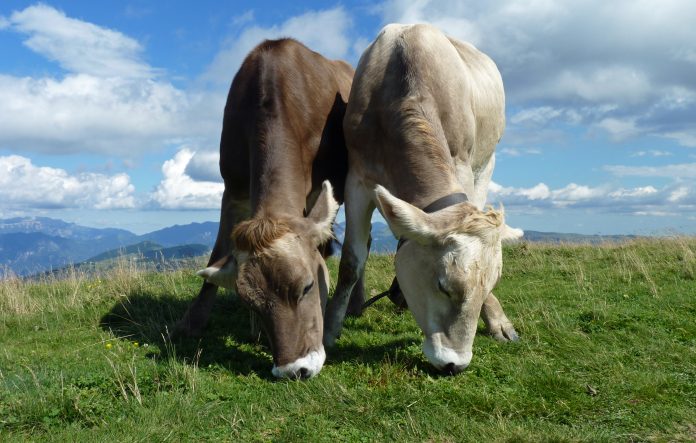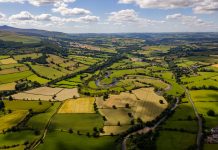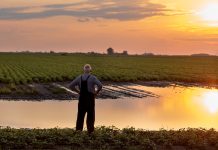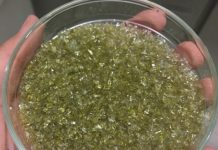Richard Teague from Ecosystem Science and Management, highlights how regenerative grazing and cropping can be used to create a sustainable and resilient agroecosystem
At least one billion rural and urban people worldwide depend on grazing ecosystems for their livelihoods. Despite the fact that cattle have been vilified for a host of damaging impacts on the global environment and human well-being, there is much evidence that, with appropriate management, ruminants can play a potentially significant role in reversing environmental damages in agriculture caused by human mismanagement and neglect. We have much evidence that regenerative management practices to restore ecosystem functionality create sustainable, resilient agroecosystems cost-effectively. However, long-term sustainability and ecological resilience will require changing current damaging high-input agricultural practices to resource conservation practices that restore soil health and ecosystem function.
Infiltration
The most significant limiting factor in grazing land ecosystems is not the amount of rainfall but the amount of rain infiltrating the soil and how long it remains there. But this is not the only important ecosystem function. Ensuring optimal ecosystem function requires efficient solar energy capture, effective water infiltration and retention, soil organic matter accumulation and retention, efficient nutrient cycling, and ecosystem biodiversity to facilitate these functions.
These functions are provided by the synergistic networks of soil organisms and plants. They include improving soil aggregation, aeration and water holding capacity, stabilizing soil, improving nutrient acquisition and retention, cycling nutrients to enhance nutrient availability, enhancing tolerance to biotic and abiotic stress, and buffering the impact of environmental factors on plants.
In particular, arbuscular mycorrhizal fungi are keystone organisms that contribute directly to the soil organic matter pool through increasing plant photosynthesis, secretion of soil glycoproteins, increase water-stable soil aggregates that enhance soil water infiltration and aeration vital to ecosystem function.
Improved management
Management decisions have significant consequences for how grasslands function in supporting profitable operations, and in sequestering carbon and providing ecosystem services. Notable examples of management approaches that have restored degraded grassland ecosystems are available, primarily where ranches are managed to achieve resource conservation goals.
Improved management, such as regenerative adaptive multi-paddock (AMP) grazing, has been shown to reverse the causal mechanisms of degradation by decreasing bare ground, restoring productive plant communities, increasing water infiltration rates and soil water storage capacity, increasing fungal to bacterial ratios, and increasing soil carbon. Their method is to use multiple paddocks per herd with short grazing periods and long recovery periods, adaptively changed when residual biomass, animal numbers, and other management elements such as growing conditions change within and between years. The key to sustainable use and recovery from degradation involves using well-planned and adaptively managed multi-paddock grazing management protocols, and adjusting stock numbers to match forage biomass to achieve desired resource and financial goals, while avoiding unintended consequences such as soil loss and decline in function, and reduced plant biomass and species composition.
Greenhouse gases
One of the significant concerns in grazingland ecosystems is the quantity of greenhouse gases (GHG) emitted by ruminant livestock. Although many scientists have concluded that ruminant production systems are a particularly significant source of GHG emissions, others have found it is possible to convert many ruminant-based production chains into net carbon sinks by changing management.
Previous assessments of capacity for methane uptake in grazed rangeland ecosystems have not considered improved livestock management practices and thus underestimated potential for methane uptake. Appropriate adaptive stocking, moderate grazing with adequate recovery, and intensification of livestock grazing management significantly contribute to mitigation potential.
Most cattle in developed countries are finished in feedlots on grain-based feeds. Proponents of this finishing method claim that this results in lower GHG emissions per kilogram beef produced and a lower carbon footprint because it reduces the overall production time to slaughter and enteric fermentation during this time, relative to grass-based finishing.
However, it is essential to consider the carbon footprint of the full food-chain of grain-based finishing. Ruminant dams and their offspring spend most of their lives on perennial grass during which the carbon sequestered by the grassland they graze exceeds their emissions, particularly under regenerative grazing. This needs to be considered when calculating the complete carbon footprint through any food-chain option.
In developed countries that routinely finish ruminants on grains, another factor decreasing the carbon footprint of a production chain is that any crop finishing of ruminants that is based on regenerative cropping practices with a negative GHG footprint (carbon sink) also diminishes the carbon-footprint considerably.
Regenerative cropping
Such modification of agroecosystem production systems and conversion to regenerative cropping and AMP-based grass-finished livestock would also provide other important ecological benefits as outlined earlier in this document. Besides, supplies of human food products would be increased by 70% if crop production currently used for animal feed and other uses such as biofuels were instead used for human food products, providing sufficient resources for billions of people.
Changing current resource degrading, high-input agricultural practices to low-input regenerative practices enhances soil and ecosystem function and resilience, improving long-term sustainability and social resilience. A primary challenge is increasing the scale of adoption of land management practices that have been documented to affect soil health positively.
In areas where no cropping is possible, grazing of ruminants in a manner that enhances soil health will reduce the carbon footprint of agriculture much more than reducing domesticated ruminant numbers to reduce enteric GHG emissions. It also provides highly nutritious food that has sustained pastoral livelihoods and cultures for centuries.
Ruminant livestock are an important tool for achieving sustainable agriculture and with appropriate grazing management, can increase carbon sequestered in the soil to more than offset ruminant GHG emissions while they support and improve other essential ecosystem services for local populations such as better water infiltration, less soil erosion, improved nutrient cycling, soil formation, carbon sequestration, biodiversity, and wildlife habitat.
Collectively, conservation agriculture aims at regenerating soil health and ecosystem function, supports ecologically healthy, resilient agroecosystems, improves net profitability, and enhances watershed function. To accomplish this, scientists need to collaborate with environmentally progressive managers who have excelled financially by improving their resource base, identify the processes associated with improvement, and convert experimental results into sound environmental, social, and economic benefits.
Please note: This is a commercial profile











